| Index > Gulls in Poland > May > LBBGs > | < Index |
Baltic Gulls (L f fuscus)
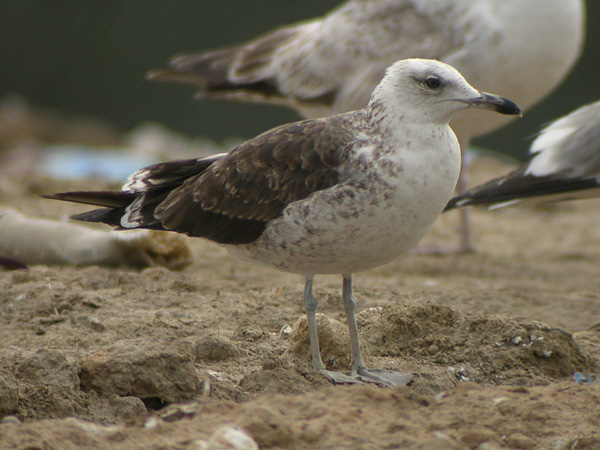
1: © Ruud Altenburg, 17-05-07. 2cy fuscus. All primaries are still juvenile but build and feather patterns very strongly point to fuscus.
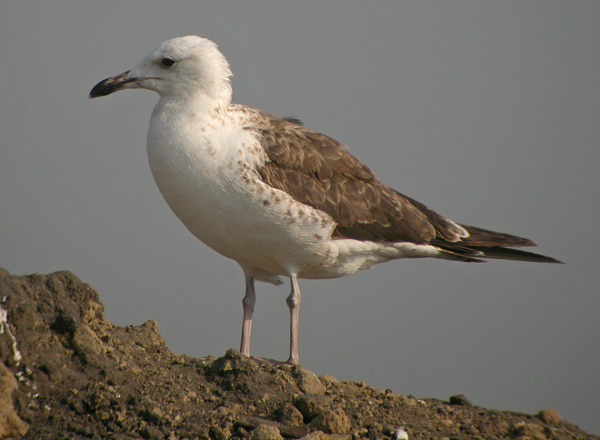
2: © Ruud Altenburg, 25-05-07. 2cy fuscus. A bulkier bird, probably a male, with a plumage very similar to the individual above.
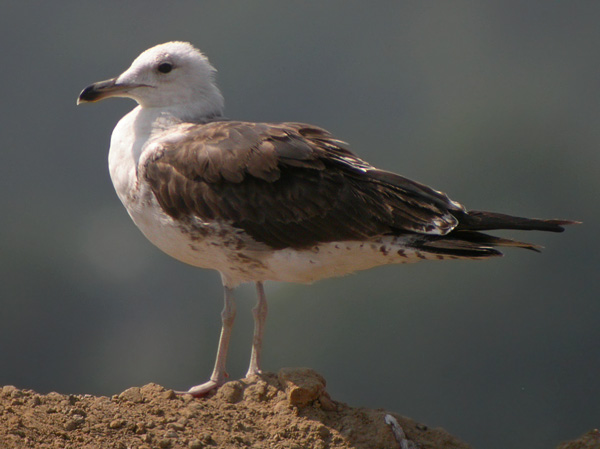
3: © Ruud Altenburg, 25-05-07. 2cy fuscus. This individual has replaced P1-9 to second generation feathers; note that P9 is black and rounded and P10 brown and pointed.
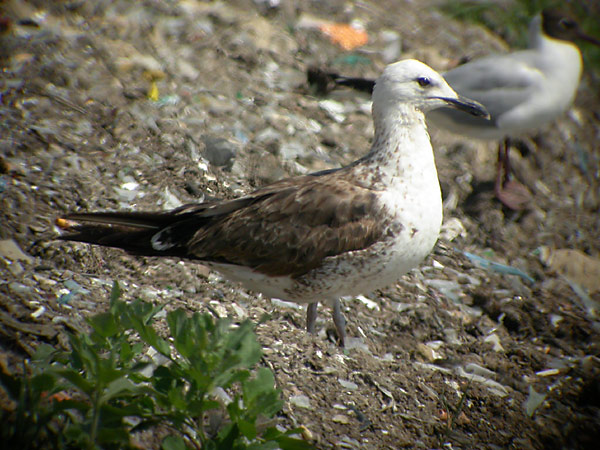
4: © Ruud Altenburg, 30-05-03. 2cy fuscus. Impossible to judge from this picture, but P1-7 are second generation feathers.

5: © Ruud Altenburg, 17-05-07. 3cy fuscus. This is a very advanced bird that hardly seems to show any signs of immaturity. Only the heavily speckled iris and lack of white tips to the primaries are indicators that this probably is a 3cy.
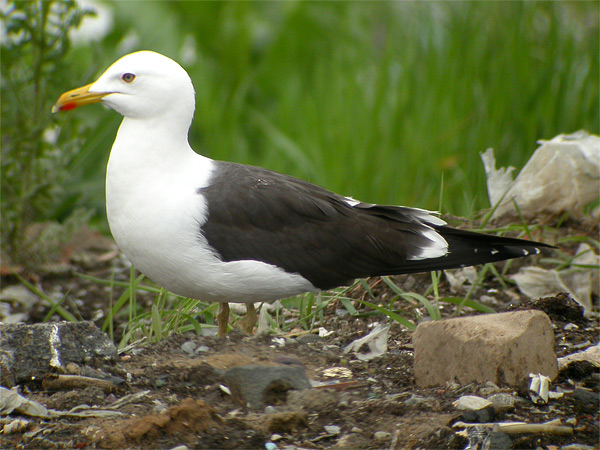
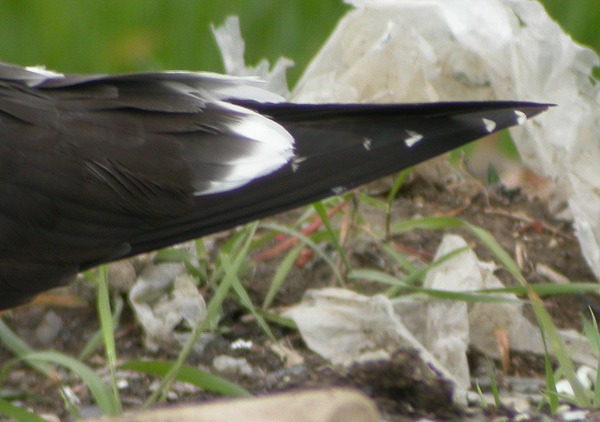
6-7: © Ruud Altenburg, 21-05-03. 3cy fuscus. Another advanced bird demonstrating that ageing fuscus can be really tricky. The wing tip, as usual, provides valuable clues. Close inspection reveals that P5-9 show white tips but P10 does not; an even closer look demonstrates that the white tips of P5-6 look more worn than the tips of P7-9. Normally P5, which is partly covered by the tertials, is better preserved than the outer primaries. Based on this, a possible moult scenario can be reconstructed. In its first winter, this individual replaced (nearly all) primaries. Subsequently in its first summer, which it may have spent in Europe, it renewed P1-6. It then suspended its moult and in winter continued with the replacement of P7. Before migrating north in its second summer, it suspended/arrested moult at P9, replacing only three primaries.
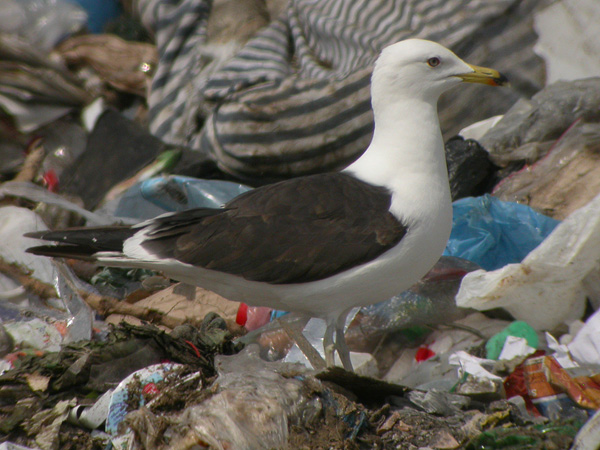
8: © Ruud Altenburg, 23-05-07. 3cy fuscus. This 3cy is easier to age, as it has a black tip to the bill and the black-grey adult-like scapulars and wing coverts interspersed with brownish feathers. P9-10 are second generation feathers.
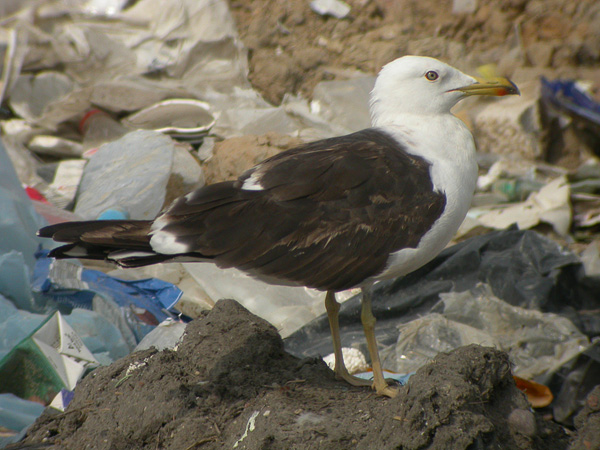
9: © Ruud Altenburg, 23-05-07. Compare to the bird above and note that this individual seems to show exactly the opposite moult status: P6-7 are clearly more worn than the outer primaries P8-10! This could be explained by the fact that contrary to the bird above, all outer primaries are second generation feathers. A possible scenario is that P1-7 were replaced in its first summer and only after a long suspension (during which at least P5-6 were bleached) resumed with P7. The fact that P10 shows quite a large mirror would indicate that this feather was renewed at a rather late stage. The question is if a mirror this large would be present on a second generation feather. An alternate and possibly more likely scenario is that this bird show irregular moult: of the visible the outer primaries only P8-10 have been renewed to third generation feathers.

10: © Ruud Altenburg, 23-05-07. The primaries of this bird show no constrast between generations of feathers.
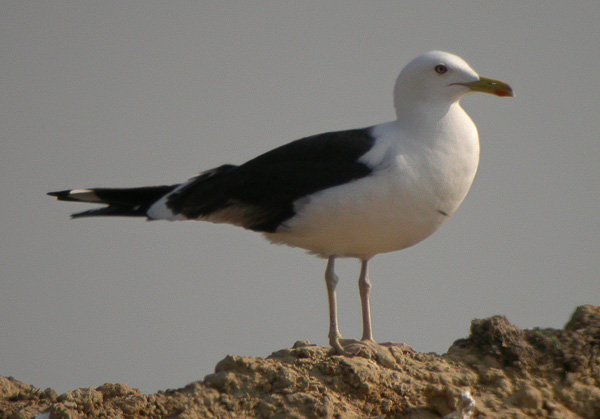
11: © Ruud Altenburg, 25-05-07. 3/4cy fuscus. A very slender and elongated bird. Note the small black mark to the bill tip, some retained brown greater coverts, and a large white mirror to P10.

12: © Ruud Altenburg, 25-05-07. 3/4cy fuscus. Another adult-like individual. The absence of white tips to the primaries and the presence of only a small mirror to P10 indicate this can be a 3cy.

13: © Ruud Altenburg, 25-05-07. 3/4cy fuscus. Very similar to the bird in 5 but note the black marking to the bill tip.
| Back | Terug |